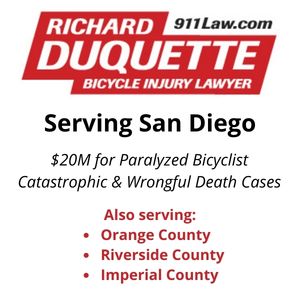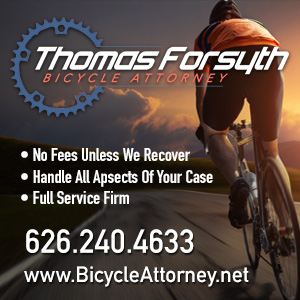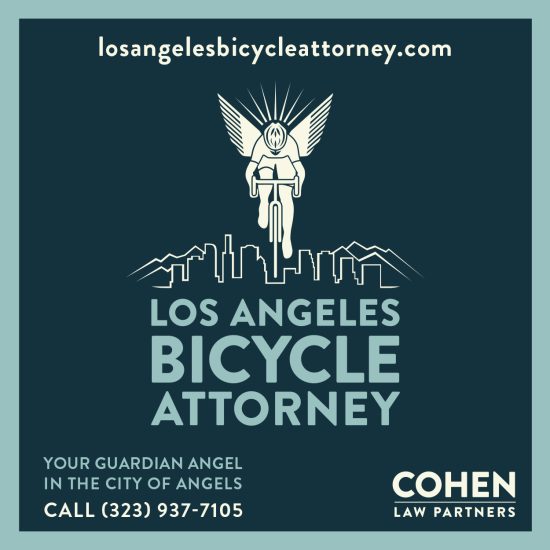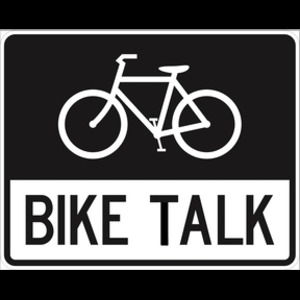The line is drawn.
At first, I didn’t notice a lot of excitement following yesterday’s post about the West Valley DOT’s secret plan to remove two miles of existing bike lanes from Reseda Blvd, along with another three miles of planned lanes.
Then Damien at Streetsblog picked up the story.
The next thing I knew, it was featured on the website of KPFK and a topic of discussion on the Ridazz forum and on Los Angeles Fixed Gear, as well as countless Facebook and Twitter pages. LAist gave it a brief mention, as did the Examiner.
And the LACBC sent out an action alert late in the day — thought they failed to give BAC Chairman Glenn Bailey credit for his legwork in bringing this to light:
EMERGENCY ACTION NEEDED:
STOP THE REMOVAL OF RESEDA BIKE LANES!
TAKE ACTION TODAY!!
Unbelievably, LADOT’s West Valley office has proposed to REMOVE the existing bike lanes on Reseda Blvd. between Ventura Blvd. and Vanowen to make room for peak hour traffic lanes. The City’s current Bicycle Master Plan actually calls for extending these lanes three miles farther north, which would also be killed by plans to run the peak hour lanes there as well.
There is a motion in favor of the Peak Hour Lane proposal before the Northridge West Neighborhood Council Tuesday night at 7pm, in the auditorium of Beckford Avenue Elementary School, at 19130 Tulsa Street in Northridge.
What you can do:
1) Attend this meeting and oppose this outrageous plan!
Where: 19130 Tulsa Street in Northridge
Auditorium of Beckford Avenue Elementary School
When: Tuesday 7 pm
2) Contact the local Council Member, Dennis Zine, to let him know how you feel!
Jonathan Brand, Planning Deputy for Dennis Zine
213-473-7003
200 N. Spring Street, Rm 450
Los Angeles, CA 90012
(213) 473-7003 Tele
(213) 485-8988 Fax
3) Contact LA Mayor Deputy Borja Leon Borja.Leon@lacity.org and Deputy Mayor Transportation Jaime de la Vega jaime.delavega@lacity.org
Key points:
• Rather than removing the bike lanes on Reseda, they need to be extended north three miles as called for in the current Bicycle Master Plan
• The current Bicycle Master Plan also stipulates that before any bike lanes are removed, there must be a public hearing before the Transportation Commission. -Insist that this procedure be followed.
• Peak hour lanes have also been installed recently on Balboa, De Soto, Tampa and Topanga Cyn Blvd., key arterials in an area that serves cyclists poorly.
• Are the peak hour lanes were actually needed?
This is a significant move backwards on bicycling issues in Los Angeles. With the LA Bicycle Plan soon to be released, we need to take positive steps forward.
According to Glenn, the result was a great last minute turnout at the Northridge West Neighborhood Council meeting last night — with over 60 “bicyclists, homeowners, residents and stakeholders” — which he was told was their largest crowd ever.
And as a result, they voted unanimously to oppose the plan.
Unfortunately this is only the beginning. A line has been drawn, but it’s going to be a long, hard fight.
So don’t stop just because we’ve won the first battle. Call or write your councilmember, as well as councilmembers Zine and Smith, who represent the districts affected, along with the deputy mayors listed in the LACBC alert.
As Glenn put it,
This effort has just begun, and it won’t be easy. Fighting City Hall never is. But that will make our ultimate victory that much more significant.
…………
Evidently I inadvertently broke the news about the new Transportation Committee officers. Oops. A cyclist collided with a deer on Angeles Crest Highway over the weekend; L.A.’s Cycling Examiner says be prepared to offer first aid in an emergency. Green LA Girl calls our attention to this weekend’s Bike Day LA. Stephen Box calls on LADOT to slow down its mad rush to approve higher speed limits that risk everyone’s safety. Bike Date looks at Idaho Stops and bike lanes that disappear at intersections. Someone is attacking Wilmington, DE cyclists and joggers with blow darts. The Philadelphia Enquirer says it’s time for détente between cyclists and drivers. A Boston writer uses the cycling death of her own daughter to call for fairer treatment for bicyclists. Following a typical anti-cyclist rant, a Baltimore writer says we all have to share the road. Finally, after a conflict between Critical Mass riders and a driver in the bike Mecca of Ogden, Utah, the mayor plans to ride with cyclists. Yeah, like that could ever happen here.









